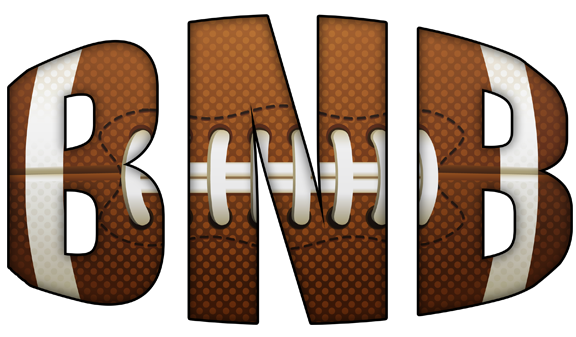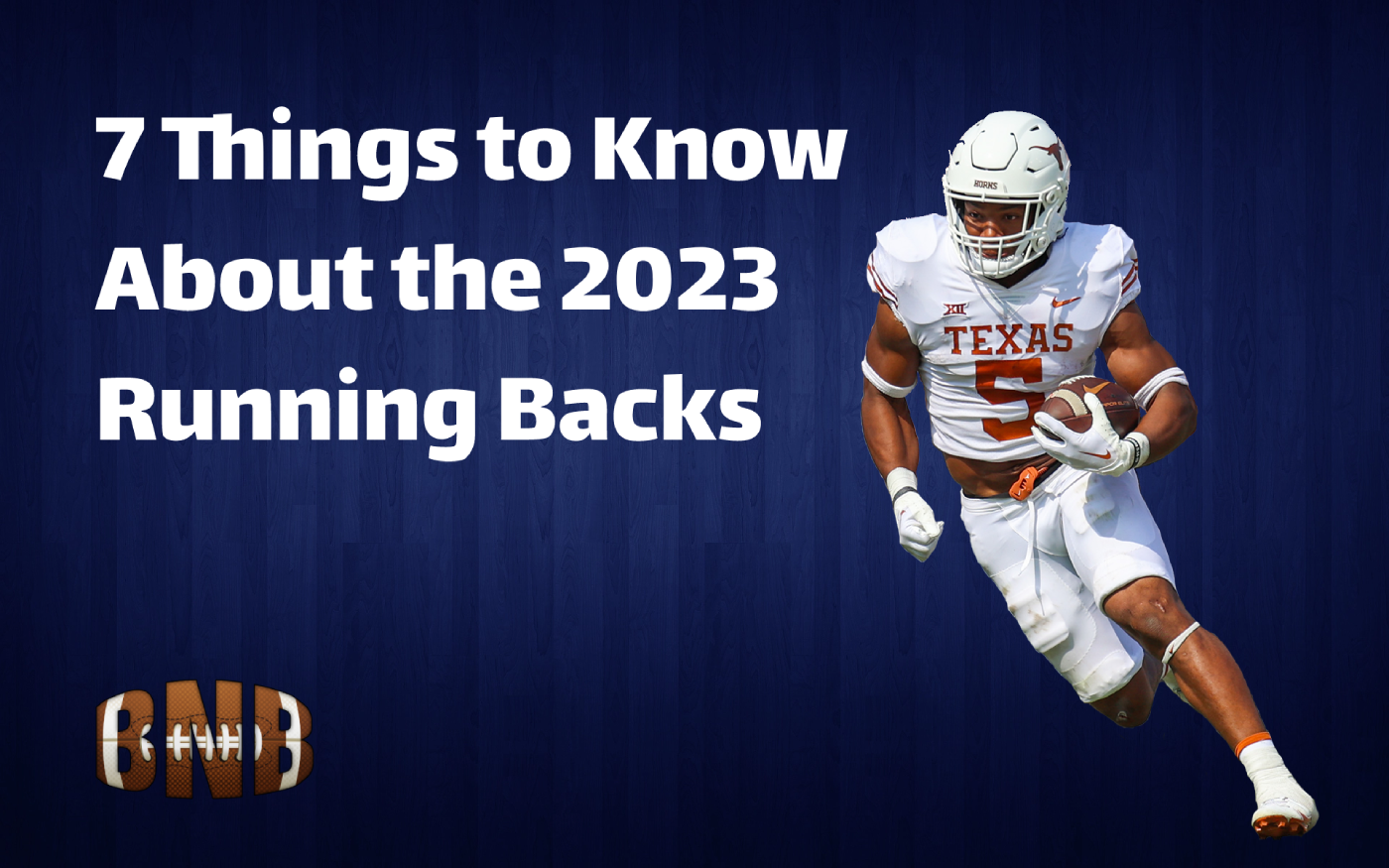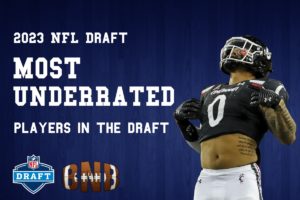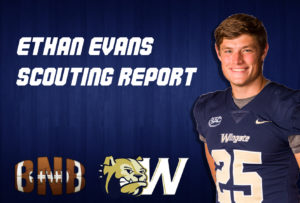The 2023 NFL Draft is still about 5 months away, but a few things are already becoming clear about the running back class.
Let’s take a look at a few trends and players to keep in mind as the football season begins to wind down.
If you’re looking to learn more about the 2023 NFL draft’s running back class, I’ve already ranked the top 50 RB’s in my positional rankings.
Both Longhorn Running Backs are Legit
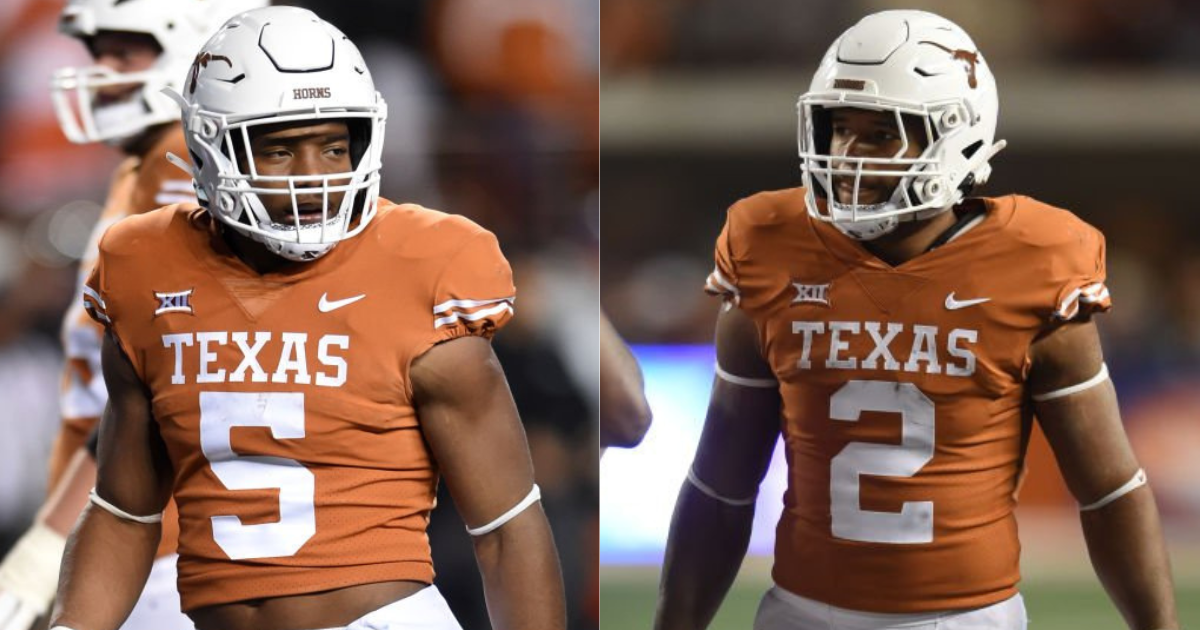
You can’t talk about the running backs without talking about Bijan Robinson from Texas.
Bijan is the highest rated running back prospect since Saquon Barkley in 2018, and has a legitimate chance to be a top 10 pick.
If you’re a contrarian who was hoping I’d call him overrated, you’re going to be disappointed. There’s very little not to like about him.
Bijan has prototypical size and athleticism for an every-down running back at 6’0″ 220 pounds, and has been elite ever since his true freshman season in 2020.
| YEAR | SCHOOL | GMS | RUYD | RUTD | AVG | REC | REYD | RETD |
|---|---|---|---|---|---|---|---|---|
| 2022 | TEX | 12 | 1580 | 18 | 6.1 | 19 | 314 | 2 |
| 2021 | TEX | 10 | 1127 | 11 | 5.8 | 211 | 295 | 4 |
| 2020 | TEX | 9 | 703 | 4 | 8.2 | 15 | 196 | 2 |
| TOTAL | TOTAL | 31 | 3410 | 33 | 6.3 | 60 | 805 | 8 |
Everyone knows Bijan Robinson, but what many don’t realize is that his backup, Roschon Johnson, is also a legitimate prospect.
Roschon is a 6’1″ 225 lb running back who who was originally recruited as a dual threat quarterback. Now in his fourth year of college, he’s rushed for at least 400 yards and 5 touchdowns every season, while averaging 5.6 yards per carry on his career.
The big bodied RB is difficult to bring down with a strong one-cut running style, but he’s also improved significantly as a pass catcher and pass blocker while also excelling on special teams.
One name that keeps coming up on calls w/ NFL execs is @TexasFootball backup RB Roschon Johnson. Priest Holmes went undrafted out of UT 25 years ago after he backed-up Ricky Williams but that won’t happen to @roschon. Hearing he could sneak into Day 2.#TheDraftStartsInMOBILE™️ pic.twitter.com/UeZsCttO3N
— Jim Nagy (@JimNagy_SB) October 15, 2022
Some NFL teams view Roschon Johnson as a fringe top-5 running back in the class despite being a backup.
While I’m not quite that high on him, he’s undeniably an NFL talent. Don’t let the modest stats fool you, he’d be a starter at most Power 5 schools.
Smaller Running Backs Are Taking Over
Take your eyes off of the Texas running backs, and you’ll notice that most of the top running back prospects are pretty small.
This is a trend we’ve noticed recently as the league shifts towards speed over size.
Long time conventional wisdom has said that if a running back is under 215 pounds, he’s probably relegated to the “change of pace running back” role.
Around five years ago, smaller backs started appearing around the NFL. To the surprise of many, they were actually able to maintain extended careers opposed to being injured and falling out of favor.
Take a look at the impressive list of running backs who are under 215 pounds today: Austin Ekeler, Christian McCaffrey, Aaron Jones, D’Andre Swift, Elijah Mitchell, Tony Pollard, Clyde Edwards-Helaire, Devin Singletary, Dalvin Cook, Miles Sanders, Raheem Mostert, Michael Carter, Darrell Henderson, and more.
The trend has already hit the NFL, and this year’s draft class is starting to get even a little smaller.

Take a look at the reported size of some of the best running backs in the 2023 NFL Draft.
Jahmyr Gibbs: 5’11” 200 pounds
Devon Achane: 5’9″ 185 pounds
Zach Evans: 5’11” 195 pounds
Tyjae Spears: 5’10” 190 pounds
Chase Brown: 5’11” 205 pounds
Deuce Vaughn: 5’6″ 175 pounds
Eric Gray: 5’9″ 205 pounds
Mo Ibrahim: 5’10” 210 pounds
Keaton Mitchell: 5’9″ 185 pounds
And the list goes on.
Pass Catching is More Important Than Ever
With running backs getting smaller, what does that mean?
It means more motioning backs out wide for mismatches, more quick passes to get the backs in open space, and more quick side to side action.
As a result, pass catching is at a premium for the running back position right now. If a running back has feet for hands, that’s going to severely hurt them.
Unsurprisingly, the top names in this draft class are almost all talented receivers out of the backfield.
Guys at the top of the class like Robinson and Gibbs are constantly showing their natural hands, and very few legitimate prospects are untested as a receiver.
The 2022 NFL Season saw an increase in short passes and run-first philosophies, and utilizing dual threat running backs is only going to be more prominent in the future.
Mo Ibrahim Wins the “If Only He Was A Little Faster” Award

I love Mo Ibrahim as a college running back. He might actually be the best college running back in the country.
That being said, his fit into the NFL is questionable.
If you don’t know Mo’s game, he is the absolute face of consistency.
Some running backs average 5 yards per carry, but run for no gain most of their touches before breaking off a big run. Big runs are fun, but the passing game is designed for explosion. The run game is designed to keep your offensive on track and gain short yardage consistently.
Mo Ibrahim does that as well as anyone, gaining 4-7 yards on just about every run.
Some NFL teams will love that. They’ll also love his best-in-the-nation contact balance, elite field vision, strong acceleration, toughness, and high level football IQ. He’s elite at what he does.
The problem is a complete lack of open field speed, combined with being undersized for a true NFL power back.
Despite being listed at 5’10” 210 pounds, Ibrahim is likely closer to 5’8″ 205. He runs as hard as anyone, but the size won’t run through too many NFL linebackers.
If he’s not a power back, you think about speed. While he has a great first step, he doesn’t have the ability to break off the long run. I don’t anticipate he’ll run a 40 yard dash, because if he did it would probably be in the 4.75-4.80 range.
That being said, if Mo was naturally blessed with just a little bit more size or a little bit more speed, he’d be a top-50 prospect. Unfortunately the speed and size aren’t coachable, relegating him to a Day 3 status at best.
Devon Achane Has Next-Level Speed
Achane got that SEC speed 😏
🥇 10.12 (w/2.2)@ffvmousvon_ | #GigEm pic.twitter.com/23wcVa7U5c
— Texas A&M Track & Field/Cross Country (@aggietfxc) April 2, 2022
Devon Achane has incredible track speed which consistently translated to the field during his time at Texas A&M.
Achane is just 5’9″ 185 pounds, but he is known by many as the “fastest man in college football” for a reason.
Achane has ran as fast as a 10.02 in the 100 meter dash, a 20.20 in the 200 meter dash, and finished his high school career as the 2020 Gatorade Texas Boys Track & Field Athlete of the Year.
Straight line speed is the strongest part of Achane’s game, and he’s fully expected to run in the 4.2’s at the combine.
Kenny McIntosh is the Perfect #2 Back
Ask NFL RB coaches and they’ll tell you most important drill at @seniorbowl is 1-on-1 pass pro.
Hard to find cleaner technical rep than this one by Georgia’s RB Kenny McIntosh.✅ Feet
✅ Hands
✅ ReactivenessCredit to Dawgs RB Coach @DellMcGee.#TheDraftStartsInMOBILE™️ pic.twitter.com/USiy2tVrzW
— Jim Nagy (@JimNagy_SB) February 28, 2023
Kenny McIntosh was an incredibly efficient producer for the back-to-back National Champion Georgia Bulldogs.
His 829 rushing yards across 15 games is underwhelming, but he was great in the red zone and converting short yardages, averaging 5.6 yards per carry on the season with 10 touchdowns.
His running ability is good, with a decent frame at 6’0″ 210. But what makes him the perfect #2 back in the draft is his receiving and pass blocking.
McIntosh brought in a ridiculous 43 catches for 505 receiving yards this past year, making him one of the most prolific receiving backs in the nation.
He’s also advanced as a pass blocker out of the backfield, making him a must-have on the field in obvious passing situations.
Whether or not he has the vision and power as a runner to develop into a true #1 running back could be debated (although he probably can), but he’ll enter the NFL as an incredibly efficient #2 back, giving a lucky NFL team an immediate upgrade.
What he does well, he does really well. And he won’t get out of the 2nd day of the draft.
The Free Agent Class Makes Things Interesting
The 2023 running back draft class is very deep, especially in the middle rounds.
But what makes the situation interesting is that the NFL will also have a very strong group of free agent running backs.
Take a look at some of the NFL players who are set to be free agents this offseason:
- Saquon Barkley
- Josh Jacobs
- Tony Pollard
- Miles Sanders
- Damien Harris
- David Montgomery
- Jamaal Williams
- Devin Singletary
- Kareem Hunt
- Raheem Mostert
- Rashaad Penny
- Alexander Mattison
- Samaje Perine
- D’Onta Foreman
- Ronald Jones
- Jerick McKinnon
With all that talent available in free agency, it’s tough to predict how much value the NFL will place on running backs in the 2023 NFL Draft.
Running Back Draft Trends
While people constantly talk about the NFL not drafting running backs in the 1st round, the trend isn’t as strong as some seem to think.
Last year was the first time since 2014 that no running backs were drafted in the 1st round, but 3 running backs were then drafted in the 2nd round, with 22 being drafted in total.
Since 2012, 77 running backs have been drafted in the first 3 rounds of the draft, for an average of 7 per year.
I currently have exactly 7 running backs with a grade in the first 3 rounds, but 11 (!!) more running backs with a 4th or 5th round grade.
